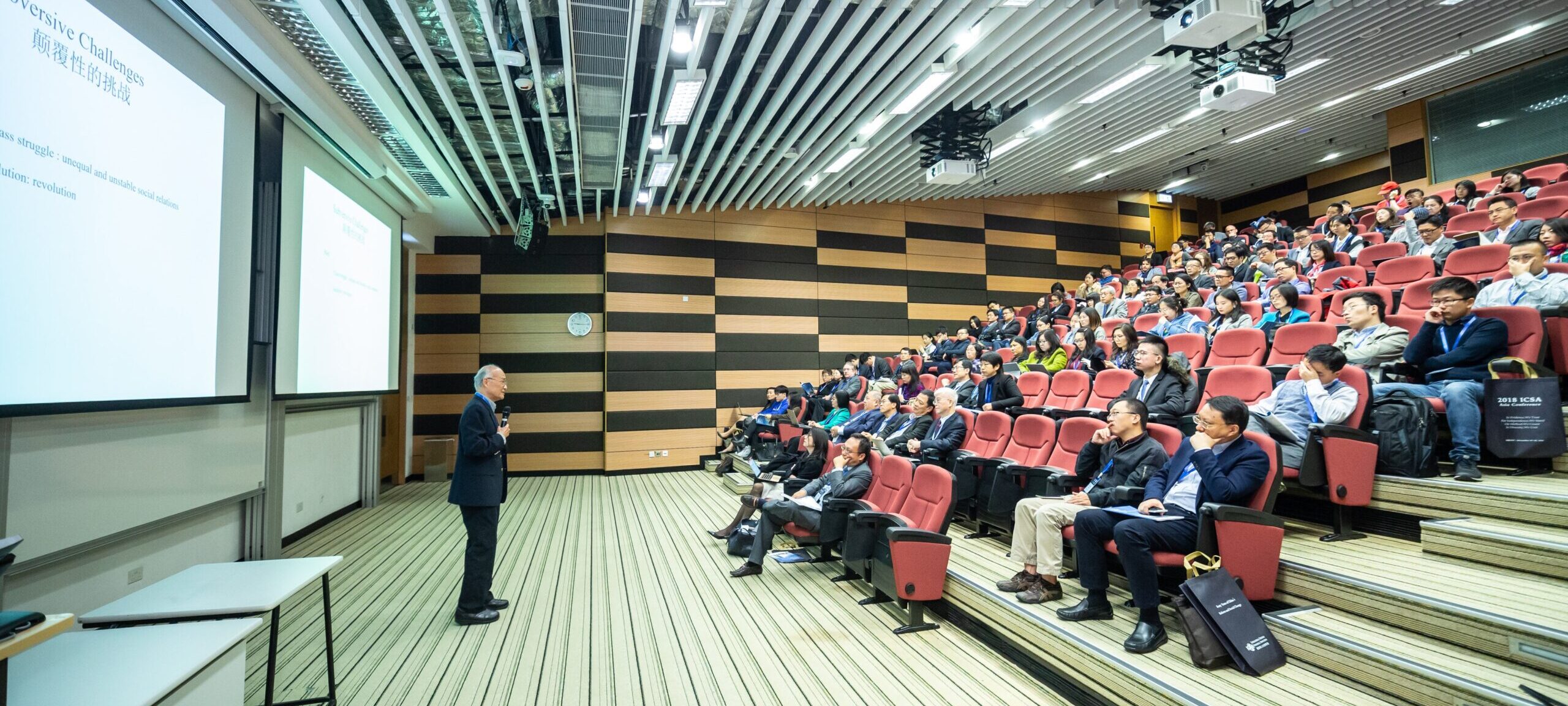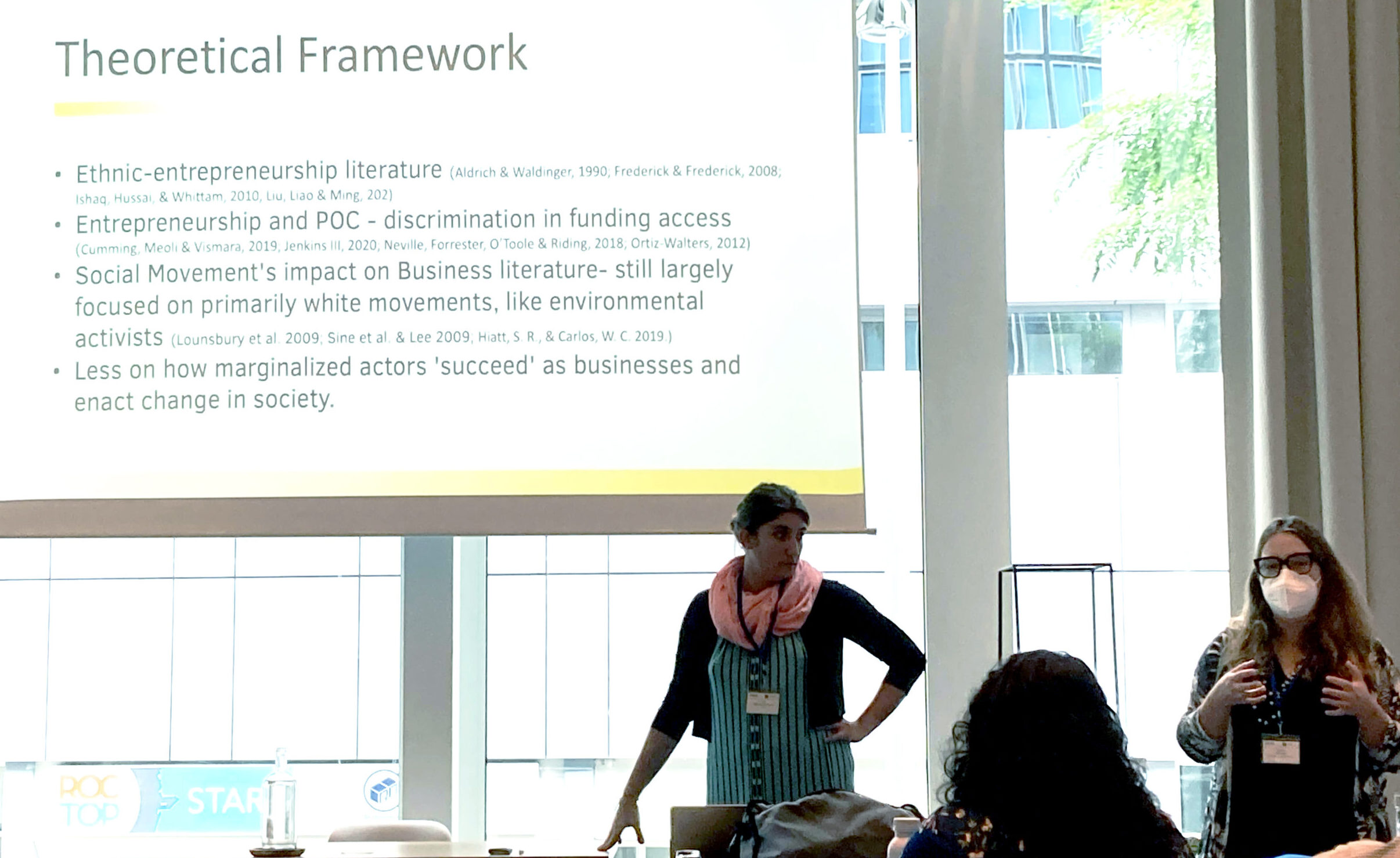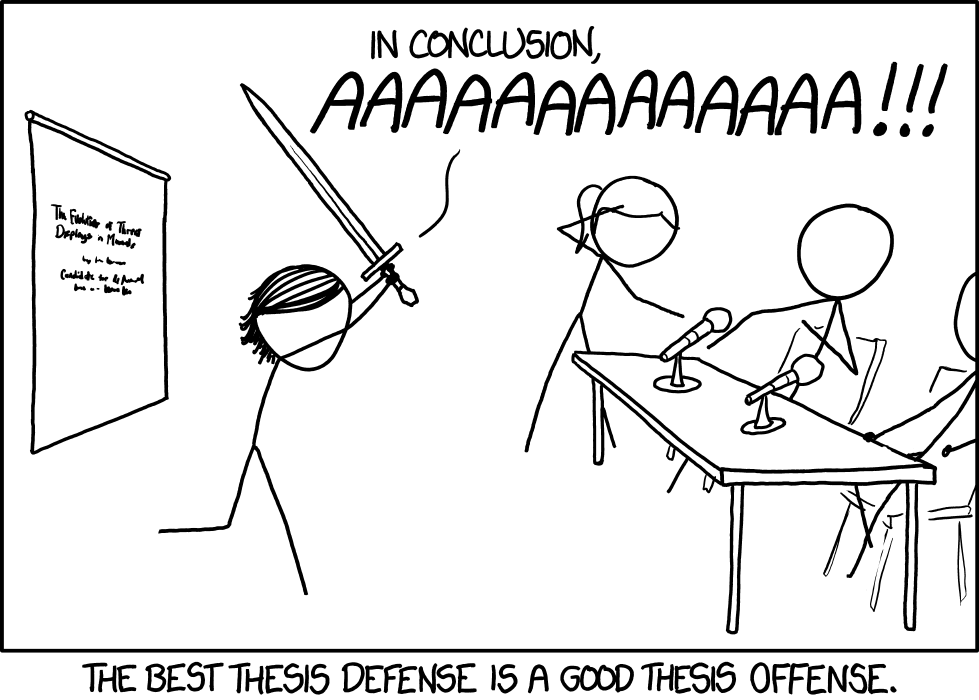2. Using Sociology in Everyday Life
2.1. Sociologists as Scholars

Learning Objectives
- Distinguish among the various types of sociologists who focus on basic research and the various institutions that employ them.
- Understand academic tenure and how the decline in the number of faculty members who have it has changed the workforce at colleges and universities.
When we think of sociologists who conduct basic research, we’re largely talking about sociologists at higher education institutions who engage in both teaching and research (see the sidebar Researchers and Research Communities). Sociology departments differ greatly in the types of sociology they specialize in. A particular department often has strengths in one or a few subfields of sociology—say, medical sociology or the sociology of race and ethnicity. These specialties can be part of a long tradition for that department, perhaps because a subfield’s most prominent scholars are or were based at that department. Sociology departments may also be multidisciplinary in that they connect their work with another discipline, like criminology or public health—perhaps teaching classes to students in both fields, running a center or institute with scholars from both fields, or even explicitly bridging two disciplines (for instance, by identifying themselves as a Department of Sociology and Criminology). Many academic sociologists also wind up working outside of sociology departments. If they have a background in organizational sociology, for instance, they may become faculty members at business schools, where they teach students about best practices in managing companies. If they study health outcomes across populations, they may be employed at medical schools or schools of public health. Other sociologists teach at schools of public policy, education, and criminal justice, which hire scholars who do work in related subject areas.
Even if a school’s sociology department doesn’t specialize in a specific subfield, its faculty most certainly do. They will teach and conduct research in their chosen areas of specialty. Through their academic writing and lecturing, they will regularly interact with other scholars at their home institution or elsewhere who share those interests. Professional associations are a critical part of that networking—for both faculty and students. A wide range of sociology-related professional associations put on annual conferences and publish journals focused on their areas of interest. At the national and international level, there are professional associations representing the entire field, such as the American Sociological Association, the Canadian Sociological Association, the European Sociological Association, the Korean Sociological Association, the International Sociological Association, and the Latin American Association of Sociology. These associations put on annual meetings in major cities that attract thousands of scholars, who attend panels devoted to specific research or teaching themes and otherwise network at meals and social events. In addition to their conferences, the larger associations will have sections or networks that specialize in particular subfields, giving sociologists access to smaller communities of like-minded peers both during and after the group’s annual meetings.

While it is a good idea to attend the annual meetings of these larger groups, students may find regional professional associations to be more welcoming and less bewildering (see Appendix A: Presenting, Writing, and Publishing for a primer on presenting at conferences). In the United States, regional conferences are sponsored by groups like the Eastern Sociological Society, the Southern Sociological Society, and the Pacific Sociological Association. Sociologists may eschew these catchall associations and instead attend conferences for groups devoted to their research areas, such as the Rural Sociological Society and the Society for the Study of Social Problems (the latter being a prominent sociological association whose mission is to further social justice). In fact, some sociologists intentionally seek out multidisciplinary associations, like the Academy of Management (a group focused on organizational studies that is largely attended by sociologists and other scholars based at business schools) or the Society for the Advancement of Socio-Economics (which attracts economic sociologists and political economists, among others).
If you pursue a career as an academic sociologist, you will inevitably find yourselves a part of these intellectual conversations and debates within your areas of interest. Sometimes, the life of an academic can be glamorous—being invited to give talks at other universities, attending conferences around the globe. However, as we describe in the sidebar Researchers and Research Communities, academic livelihoods can be precarious, and the competition is often intense across the range of available faculty positions. To have a shot at a tenure-track position, you usually need to prioritize research over teaching—a fact that many students with hopes to teach at the college level may not realize. You typically will want to obtain a PhD to get stable employment, and it is generally a good idea to study the field that you will wind up teaching in—departments of sociology tend to prefer hiring people with PhDs in sociology, for example.
Researchers and Research Communities
Sometimes nonscientists are confused about the various actors and groups involved in conducting scientific research. Not all of them are professors. Here is a breakdown of the various terms used to describe researchers and research communities—as seen in the field of sociology, but more broadly, too.
Doctorates and other degrees. To teach sociology (or any academic discipline, for that matter) at a four-year university, instructors in many countries typically must have an advanced degree known as a doctorate or PhD (in Latin, philosophiae doctor, or “doctor of philosophy”). This requires the scholar to spend several years taking classes and then several more years conducting an independent and original research project known as a dissertation, or doctoral thesis. Oftentimes, the scholar gets a master’s degree after two or so years in graduate school, perhaps after completing a master’s thesis—an independent project on a smaller scale than a dissertation. They may stop their studies at that point or continue to complete their PhD. For dissertations and theses, students typically need to get three or more scholars from their department (and frequently from outside the department or school as well) to serve on a thesis committee. Members of the committee review the student’s work and must all sign off on both the proposal for the study (the thesis prospectus) and the completed study for students to receive their degree. One faculty member, usually the student’s main advisor, chairs that committee. In most departments, students present their prospectus and completed study to their committee and respond to the committee members’ feedback and criticisms in a storied oral ritual known as the dissertation or thesis defense—which can sometimes be as brutal as this relevant XKCD comic suggests (but usually not, thankfully).

Professors, faculty members, departments. After scholars earn their PhD, they frequently go on to work as professors. Within a college or university, these scholars will be identified as faculty members of particular departments, which are generally divided along disciplinary lines (e.g., the Department of Sociology). U.S. universities distinguish between full professors (typically just called “professors” in their job titles), associate professors, and assistant professors. One key distinction between these types of professors is whether they have academic tenure, a form of job security that makes it difficult to fire a professor. Tenure is meant to allow professors to study and write about whatever they want without fear of political repercussions for speaking the “truth.” A college or university will grant a professor tenure after a lengthy process of tenure review, which involves other faculty at that school and other schools being asked to assess the quality and quantity of the professor’s research, teaching, and other contributions. Typically, associate and full professors (also known as senior faculty) have tenure, while assistant professors (also known as junior faculty or tenure-track faculty) are in the process of applying for it. Assistant professors typically “go up for tenure” after spending six or so years as junior faculty.
Instructors, lecturers, teaching faculty, adjunct faculty. The number of tenured and tenure-track faculty (collectively known as tenure-line faculty) in the United States has declined dramatically in recent decades, in part because of desires by universities to hire cheaper instructors without tenure protections. According to data compiled by the American Association of University Professors (AAUP), an advocacy organization representing academics, the numbers of “contingent faculty”—part-time- and full-time faculty appointed off the tenure track—has risen dramatically over the past several decades: from 43 percent of the academic labor force in 1975, to 69 percent in 2019 (AAUP 2020).
In the United States, faculty who are not tenured and not on the tenure track are often referred to teaching faculty and may have the title instructor or lecturer (to distinguish them from professors). Teaching faculty generally are not required to conduct research in addition to their teaching duties, but many do substantial amounts of research—perhaps in the hope of landing one of the dwindling number of available tenure-track positions. Sometimes teaching faculty are full-time and may even have the rank of “professor,” but this is typically qualified with the term “teaching professor” to underscore that they do not primarily conduct research.
Full-time non-tenure-track faculty accounted for 18 percent of the academic labor force in 2020, nearly double their proportion in 1975, but the numbers of part-time faculty have grown even more—to 52 percent of the labor force in 2019. Frequently, part-time instructors or lecturers do not have long-term contracts with the university, but are paid for each class they teach. These teachers are called adjunct faculty, or adjuncts, and they tend to suffer from low wages and job insecurity. The AAUP describes their pay rates as “appallingly low,” calculating that on average they received just $3,500 per course section taught in the 2019–20 academic year, with less than a third having employers who offered health insurance (AAUP 2020).
Research universities, liberal arts colleges, and community colleges. Some academic institutions focus primarily on research, while others focus primarily on teaching. In the United States, an influential ranking system, the Carnegie Classification of Institutions of Higher Education, distinguishes colleges and universities based on how much research their scholars do. At the research-intensive end are so-called R1 schools that engage in “very high research activity.” Notably, these schools have large populations of doctoral (PhD) students who are training to be professors. Many R1 schools are Ivy League schools with large endowments, but they also include many large public universities—particularly so-called land-grant universities (like Virginia Tech) largely created through legislation passed in the nineteenth century that granted federal lands for the purpose of founding universities.
Our school, Virginia Commonwealth University, is considered an R1 institution, though we should note that this designation can depend on particular departments or schools with a large research presence (like our medical school), and other departments or schools within that university may not be so research-focused. Overall, however, the tenure-line faculty at research universities (whether R1 or lower-ranked) tend to spend more of their time on conducting research, often leaving much of the actual work of teaching to graduate students or teaching faculty. Liberal arts colleges tend to conduct less research than research universities. These schools have few or no graduate students, offer smaller classes, and have faculty who are primarily focused on their teaching duties. Even if they do not have graduate students, however, liberal arts colleges offer four-year (bachelor’s) degrees. Community colleges, by contrast, offer only two-year (associate’s) degrees. Faculty at community colleges often do not conduct research, and they do not always have PhDs—although given the competitive job market we discussed earlier, PhD graduates increasingly are winding up teaching at these schools.
Think-tank scholars, policymakers, independent scholars. Sometimes, social scientists work as researchers at think tanks, which are organizations devoted to conducting research. Think tanks can be government agencies, but many are private groups funded by governments, corporations, foundations, or wealthy donors. Unlike academics, think-tank scholars typically do not teach students, though many researchers have faculty appointments at universities in addition to being paid by think tanks. For most think tanks, the goal of their research is to influence policymakers—top government, corporate, or other officials who can create laws, regulations, rules, and other sorts of policies that affect people’s behavior. As a result, much of the research that think tanks engage in is applied. That said, think-tank researchers are different from other nonacademic researchers in that they may do more in the way of basic research, and their paths often cross with those of academics. In fact, scholars at these institutions sometimes publish their work in academic journals and attend academic conferences. Their counterparts based at universities, in turn, will frequently cite and build on their work—a sign that they are part of the larger scientific conversation about basic research.
You may also find independent scholars—researchers without any affiliations to a university, think tank, or other institution—engaged in these sorts of debates about basic science. This is quite rare, however. In sociology (and across scientific fields, for that matter), your institutional credentials matter a great deal in how seriously your research is taken—for better, or for worse.
Key Takeaways
- Sociologists specialize in particular subfields of sociology, which means that departments of sociology at different universities or colleges may focus on particular research areas, and sociologists often work in interdisciplinary departments or schools.
- Outside their academic institutions, sociologists connect with each other through professional associations, which often focus on specific subfields or interdisciplinary studies.
- Like all faculty at universities and colleges, academic sociologists are divided into tenured faculty, tenure-track faculty, and teaching faculty. The ranks of teaching faculty have grown enormously over recent decades, and many of these instructors have little in the way of income or job security.
- Academic institutions differ greatly in terms of the mix of research and teaching they do, with R1 universities being the most research-intensive, and liberal arts colleges and community colleges focused more on teaching.
- Sociologists also work outside academic institutions, with scholars at think tanks being the most engaged in basic research that is similar to what academic sociologists do.
Membership organizations that represent individuals who share employment or interests in a specific industry or field, such as an academic discipline like sociology.
An original research project that a PhD student typically must complete to receive their doctoral degree. PhD students who have successfully completed their coursework and any qualifying exams and are now working on their dissertation are called PhD candidates (and are colloquially described as ABD—“all but dissertation”).
A form of job security granted to senior professors who are distinguished as experts in their field. Tenure makes it difficult to fire a professor and is meant to protect their ability to study and write about controversial topics.
Part-time instructors or lecturers at a college or university who do not have long-term contracts with the university, but who are typically paid for each class they teach. (Colloquially known as adjuncts.)
Large research universities that engage in “very high research activity,” according to the Carnegie Classification of Institutions of Higher Education, which means that they have substantial doctoral programs and numerous faculty and students focused primarily on research.
Top government, corporate, or other officials who can create laws, regulations, rules, and other sorts of policies that affect people’s behavior.
Researchers without any affiliations to a university, think tank, or other institution.

